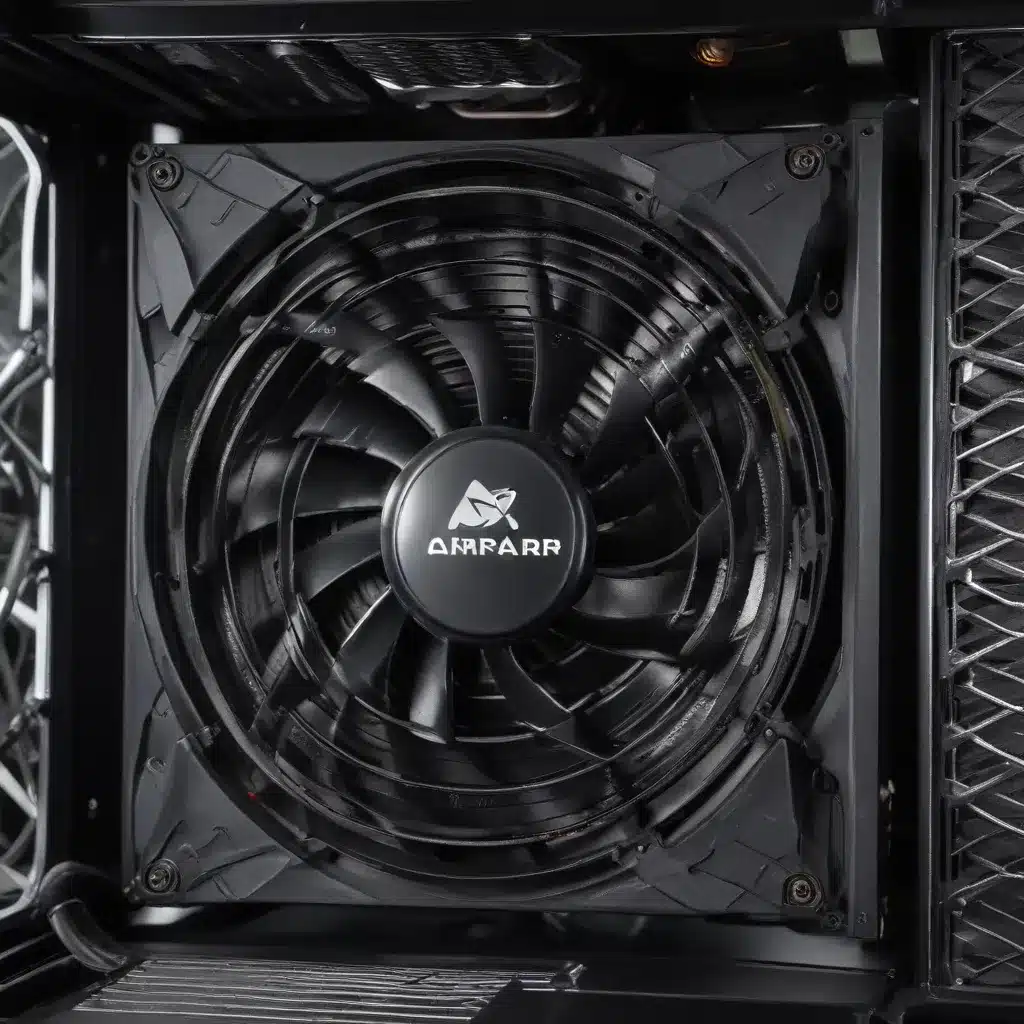
As a seasoned IT professional, I’ve had the opportunity to work with countless desktop gaming PCs and help users optimize their system’s cooling and airflow. In this comprehensive guide, I’ll share practical tips and in-depth insights to help you achieve optimal thermal performance for your high-powered gaming rig.
Understanding Airflow Dynamics
The key to effective cooling in a desktop PC lies in understanding the principles of airflow. Proper airflow ensures that hot air is efficiently expelled from the system, allowing cooler air to be drawn in and circulate throughout the case. This process is essential for maintaining stable temperatures and preventing thermal throttling or damage to critical components.
Intake and Exhaust Fans
The foundation of airflow optimization begins with the strategic placement and configuration of intake and exhaust fans. Intake fans, typically located at the front or bottom of the case, draw cool air into the system. Exhaust fans, often positioned at the rear or top, expel the heated air out of the case. Ensuring the right balance between intake and exhaust is crucial for maintaining a steady, unobstructed airflow.
Negative Pressure vs. Positive Pressure
There are two primary airflow strategies to consider: negative pressure and positive pressure. Negative pressure setups have more powerful exhaust fans, creating a slight vacuum that pulls air through the case. Positive pressure setups prioritize stronger intake fans, pushing air through the system and out through the exhaust. Each approach has its own advantages, and the optimal choice depends on your specific case and component layout.
Optimizing Airflow in Your Gaming PC
Now that we’ve covered the fundamentals, let’s dive into the practical steps you can take to optimize airflow and cooling in your desktop gaming PC.
Case Fan Placement and Configuration
The positioning and configuration of your case fans play a crucial role in airflow optimization. As a general rule, you’ll want to have at least one intake fan at the front or bottom of the case and one exhaust fan at the rear or top. Experiment with different fan placements to find the most efficient arrangement for your specific setup.
Consider the following guidelines for fan placement:
– Front intake: Draws cool air into the case, directly cooling the CPU and graphics card.
– Bottom intake: Provides additional airflow for the graphics card and lower components.
– Rear exhaust: Expels hot air from the case, helping to maintain overall cooling.
– Top exhaust: Assists in removing hot air from the CPU and upper components.
Additionally, ensure that your fans are configured to spin in the correct direction, with intake fans pulling air into the case and exhaust fans pushing air out.
Heatsink and Radiator Orientation
The orientation of your CPU heatsink or liquid cooling radiator can also impact airflow and cooling efficiency. If you’re using a tower-style air cooler, position the heatsink fins parallel to the airflow for optimal heat dissipation. For liquid cooling systems, mount the radiator so that the fans are pulling air through it and expelling it out of the case.
Cable Management and Airflow Obstructions
Proper cable management is essential for maintaining unobstructed airflow within your gaming PC. Tidy cable routing and the use of cable sleeves or ties can help ensure that airflow is not impeded by loose wires or cables. Additionally, avoid placing components or other objects directly in the path of airflow, as this can create turbulence and reduce cooling efficiency.
Dust Filters and Airflow Restrictions
Dust filters are a necessary component to keep your PC clean and protect its internals, but they can also restrict airflow if not properly maintained. Regularly clean or replace your dust filters to ensure they don’t impede the flow of air through the case. Similarly, be mindful of any other potential airflow restrictions, such as mesh panels or covers, and make adjustments as needed.
Monitoring and Optimizing Cooling Performance
To ensure your gaming PC’s cooling system is performing at its best, it’s essential to monitor temperatures and make adjustments as necessary.
Monitoring Temperatures
Utilize system monitoring software, such as HWMonitor or NZXT CAM, to keep a close eye on the temperatures of your CPU, graphics card, and other critical components. Identify any hot spots or components that are running at higher-than-desired temperatures.
Adjusting Fan Speeds
Based on the temperature readings, you can adjust the speeds of your case fans, CPU cooler, and graphics card fans to optimize cooling performance. Many motherboards and system utilities offer fan speed control options, allowing you to fine-tune the airflow to meet your specific cooling needs.
Overclocking and Thermal Considerations
If you’re an avid overclocker, be mindful that pushing your components to their limits can significantly increase heat generation. Ensure that your cooling solution is up to the task by monitoring temperatures closely and making necessary adjustments to fan speeds or even upgrading your cooling system.
Conclusion
Optimizing airflow and cooling in your desktop gaming PC is a crucial aspect of maintaining peak performance and longevity. By understanding the principles of airflow dynamics, strategically configuring your case fans, and closely monitoring temperatures, you can create a well-balanced cooling system that keeps your high-powered components running at their best.
Remember, the IT Fix blog is here to provide you with practical tips and in-depth insights on all things technology, computer repair, and IT solutions. Stay tuned for more informative articles to help you get the most out of your gaming setup.












